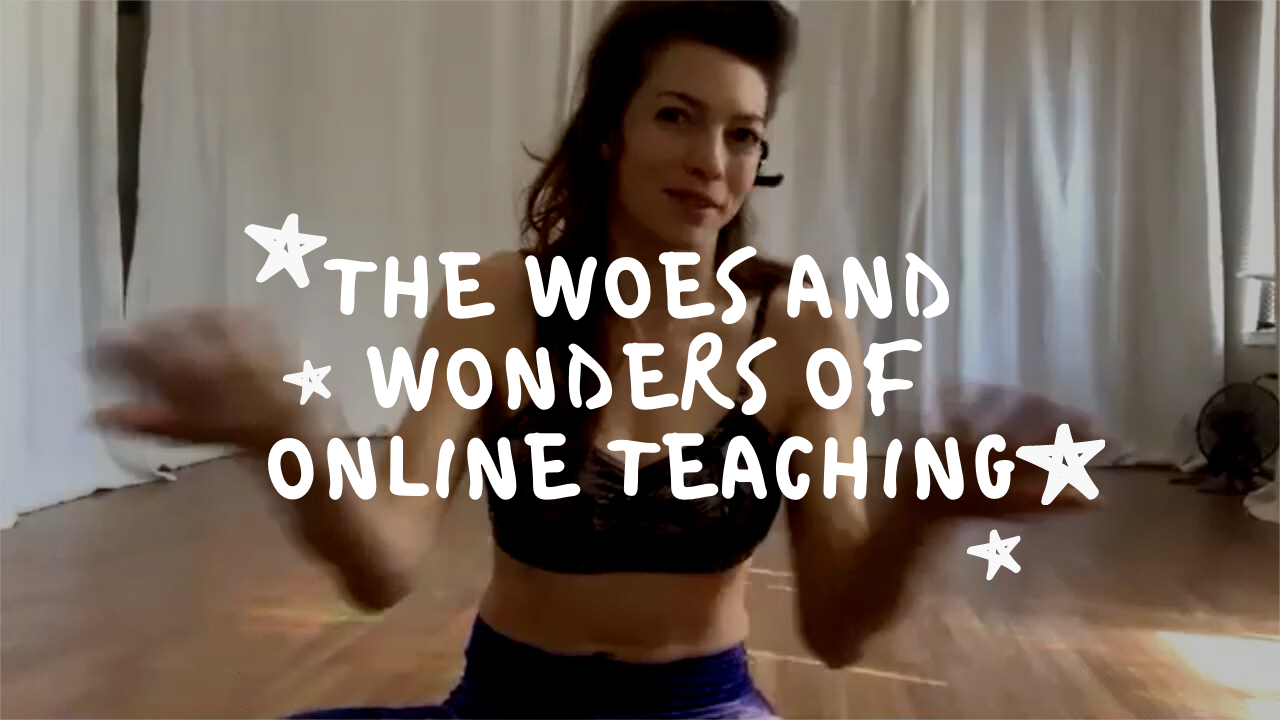Have you ever shared something you care about, only to be met with a disinterested “uh-huh”? That was the feeling in my body after my first online classes. But, it had NOTHING to do with how the people in attendance were being.
In fact, I was thoroughly impressed by the dedication, work ethic, and engagement of people in the class. When I’d squat down and see the little videos of people all around the world in learning their homes, in a state of wonder I’d think, “Wow, they are actually trying the material!” I knew that trying to learn floorwork or pole dance through a little screen is equally as challenging as teaching it.
So, why did I feel sad?
1. I’d set myself up for that feeling by anticipating that teaching online would be lackluster compared to in-person experiences. (Our expectations shape our perceptions and our experience.)
2. I love to help, and I couldn’t tell if I was helping.
In-person, my visual field is full of bodies processing movement. I adjust my tempo, tone, words, and music to what I’m seeing. This feedback loop allows me to optimize the learning experience.
In online teaching, for your body to be seen, you have to go so far from the screen that you cannot see the people in the class. This makes the experience more uni-directional and presentational. To get visual feedback, I’d have to come to the front and look at the screen, when the people watching would probably be best supported with the continual visual input of me, the teacher, moving, and cueing the exercise. This left me feeling conflicted.
3. I love to play; I usually seek opportunities to get people in the room interacting with one another and laughing.
For me, teaching is an exchange; it is a structured improvisation that is enriched by forging relationships and busting jokes. With everyone in solitary zoom class confinement, I felt that I’d lost some of my favorite tools for facilitating learning and connection.
4. I was mourning the loss of something I love. I’ve been crazy about teaching movement for twenty years, and have accumulated thousands of hours of classroom time. Rather than a change of approach, teaching to a screen felt like a change of career.
But, I believe online learning IS HERE TO STAY. (As Robert Terceck says, anything that can be ‘vaporized’ will. That includes many in-person classes and movement spaces.
Plus, as an American, I don’t expect to be able to travel again, any time in the next several years, so I’m planning my life with an expectation of zero travel or in-person classes
This meant I needed A BIG FAT HEALTHY RE-FRAME. Re-framing (also known as cognitive reframing) is a technique popularized in psychology that invites us to look at a situation from a different angle.
The borders of my upgraded Teaching Online frame became:
The Celebration: How wonderful it is that we have access to one another, all across the globe, in this new format?
The Potential: Helpful things relayed in online classes have the potential to reach far more people. More people can attend class and hopefully, they will share what’s helped them with their local communities.
The Truth: This is in service to the planet. Way less fossil fuel burns to get us together and no high-waste road meals are consumed.
The Future: This is just the beginning of the online learning boom. So, I must learn to LOVE teaching in this format, or else I can’t allow myself to do it. The technology is bound to improve rapidly, and I expect these improvements will lead to a more effective connection.
How has your learning online or teaching online experience been?
What have you loved? What have you hated?
I’d love to hear your feedback on what worked or didn’t work for you.
Excerpts from a couple of my courses this August:

